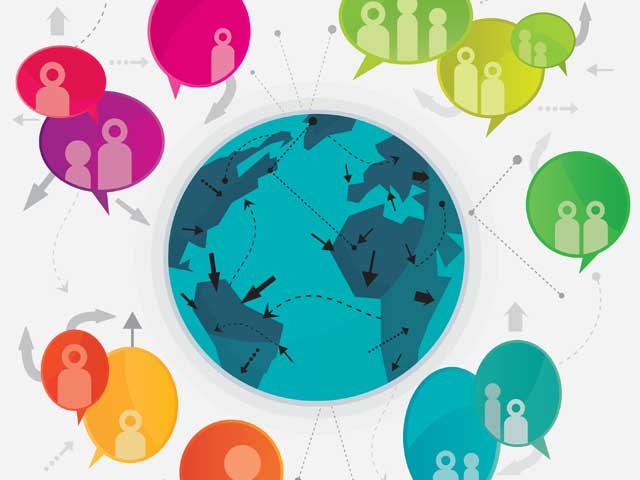The Many Ways the World Communicates
Understanding the Diversity of Languages

Help students gain an understanding of the nature of human communication and foster a scientific view on languages. Through class activities, games, reading, and analysis, students will learn that speaking a language is only one way people communicate information. In order to make a language understandable among groups of people, a system of rules is necessary. Languages and words are not the same thing. Not all languages have a written form. Words have enormous influence on languages. Finally, a natural language is not static. It is developing all the time over time, space, and social factors.
This lesson is a formative task that can be combined with others in this series to build what can be a two-week unit. This activity takes one standard class period, plus after-class reflection.
Essential Questions
- What is a language?
- How do we look at languages in the world?
Enduring Understandings
- People use different ways to communicate information. Using vocal sounds (speaking a language) is the most efficient way.
- In order to make a language understandable among a group of people, a system of grammar is necessary.
- Languages and words are not the same thing. Not all languages have a written form. Words have enormous influence on languages.
- A language is not static. It is developing all the time over time, space, and social factors.
Resources and Materials
- Video: See and Hear Morse Code
- Handouts: Morse Code (hand out or ask students to pull up webpage)
- Video: Scuba Diving
- Video: International Maritime Signal Flags
- Video: Cheating in High School
- Paper or computer for note taking.
Procedure
- Organize students into small groups to brainstorm how people use different ways to communicate information.
- Hand out or ask students to go to the Morse code handout webpage. Write a simple sentence on the board in English or Chinese pinyin or other language using Morse code. Ask students to decode it to see who can do it correctly first.
- Encourage students to open their minds. Any form of communication—nodding, code, town crier—can be an acceptable communication channel.
- Offer students some hints by playing videos (see Resources, above), and modeling other forms of communication.
- Don’t rush their exploration of the concept of language; allow students to come up with uncommon or innovative ways of communicating.
- Each group records communications methods. Each group member should be prepared to give a short presentation.
- At the end of class, ask students to have a discussion about what communications means using evidence or analysis from their small-group work.
Homework
Ask students to think about this question and be ready to discuss during the next class:
Of the communications methods, in what ways are information encoded and decoded? How do people express themselves, and how do others read those expressions? Think expansively about what this might mean.
This module is aligned to the four pillars of Global Competence. It helps students:
- Investigate the World by
- Synthesizing facts and ideas to develop a position on a cultural issue.
- Enhancing and deepening the study of other subjects through knowledge of the target language and culture(s).
- Recognize Perspectives by
- Identifying similarities and differences between the target culture and one’s own culture by comparing practices, perspectives, and products.
- Identifying regional differences by comparing cultural products and features of languages.
- Comparing and contrasting the nature of the target language with one’s own through reading, writing, speaking, and listening.
- Communicate Ideas by
- Analyzing, synthesizing, and presenting information in a way that recognizes and accommodates multiple perspectives.
- Take Action by
- Enriching the language learning experience by applying language skills in real-world contexts and scenarios.
